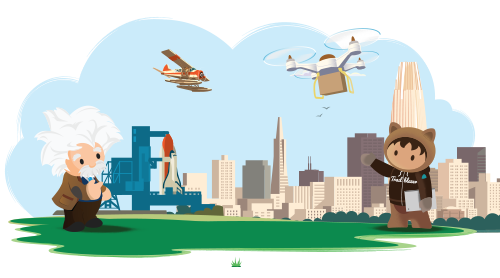The Fourth Industrial Revolution is a buzzy industry term that’s rapidly gaining momentum in the business world. But what is the Fourth Industrial Revolution, exactly, and what does it mean for your business?
As we approach the Fourth Industrial Revolution, or Industry 4.0, it's important to recognise the differences between it and the three previous Industrial Revolutions. What started with steam and water power evolved to advanced computerisation and technology that's poised to disrupt nearly every industry in every country at unprecedented speed. What will the benefits be for companies? What opportunities can be seized?
What is the Fourth Industrial Revolution?
The Fourth Industrial Revolution refers to changes and shifts in the way we work, live and connect with one another as a result of the adoption of the Internet of Things and cyber-physical systems. As more and smarter technologies make their way into our workplaces, connected devices will learn to visualise and interact with the production chain, automating the decision-making process.
Regardless of industry, the Fourth Industrial Revolution is likely to disrupt all economies and disciplines. Although it may be seen as the next phase of the Digital Revolution, because of the scope, velocity and impact, this revolution is distinct in its own right. It’s not only disrupting nearly every industry on a global scale, but it’s also driving monumental change at unprecedented speed.
The technological advancements of the Fourth Industrial Revolution hold both enormous potential and incredible risks. One of the more pressing challenges is that stakeholders and decision-makers tend to be conventional and nonlinear in their approaches, which limits strategic thinking about innovations that will shape the future.
Promises and challenges
The aspects of the Fourth Industrial Revolution that separate it from its predecessors are the same distinctive aspects that give it such promise and risk. Before strategising for the future, it’s important to understand the possibilities and perils.
Promises
The greatest benefit of the Fourth Industrial Revolution is the potential to maximise the quality of life and income potential on a global scale. In a developed nation, this means new technologies that optimise the already connected world we live in for more efficiency and convenience. We’ll see connected devices that improve cooperation among teams, workplace automation, and connected devices that enhance business processes. The revolution may also bring better disaster preparedness.
Challenges
Like other disruptive technologies, one of the biggest risks of the Fourth Industrial Revolution involves planning and regulation regarding our security in an increasingly connected world. We may experience social tension as a result of socio-economic changes and a more segregated job market with more income disparity. In all likelihood, the early adopters will be those with the resources to secure new technology, which has the potential to fuel success and widen economic gaps. It’s possible that many skills and jobs may become obsolete.
In addition, the changes resulting from the revolution may be so fast and dramatic that even those early adopters could be left behind. In some cases, the changes may begin a ripple effect that might make it difficult to catch up. For this reason, it’s vital that any business prepare their future strategy thoroughly to mitigate the impact.
Get insights on how companies can revamp workforce development in the Future of Workforce Development report.
Preparing for the changes
To stay ahead of the Fourth Industrial Revolution, people need to be strategic and proactive in influencing how technology affects our world on a global level. It requires collaboration and shared expectations of how it may impact our social, cultural and economic future.
Watch Customer Success in the 4th Industrial Revolution with Marc Benioff and industry trailblazers like Adidas, 21st Century Fox, and Girl Scouts
First and foremost, businesses need to devote resources to data analysis and to technical infrastructure that promotes connectivity. It’s likely that any business that isn’t on board with smart devices and automation may fall behind.
Leaders also need to stay open, flexible and innovative to manage throughout these dramatic, nonlinear shifts. Embracing and adapting to change is the most valuable tool for a professional. Focusing on training and skills that help employees with adaptability, critical thinking and flexibility in the future workplace is important for a smooth transition.







